Delft - Nearly Perfect Urban Living
![]()
Once again, we were able to experience near perfection in urban living - in Delft. For an idyllic month we lived in a studio apartment in the old city on a quiet straat along a small canal. We found ourselves struggling to explain why we so enjoyed the experience. Was it the sense of living history, the tranquility of the view, the comfort of the place, the proximity to a food market and a number of cafes? Yes, all of these.
From our front doorstep, a short stroll along the water lily-clad canal shaded by great trees, brought us to the Oosterport where the Rijn-Schie kanaal (canal) ran on to Rotterdam. Here Oude Delft was protected by a medieval gate with its twin towers.
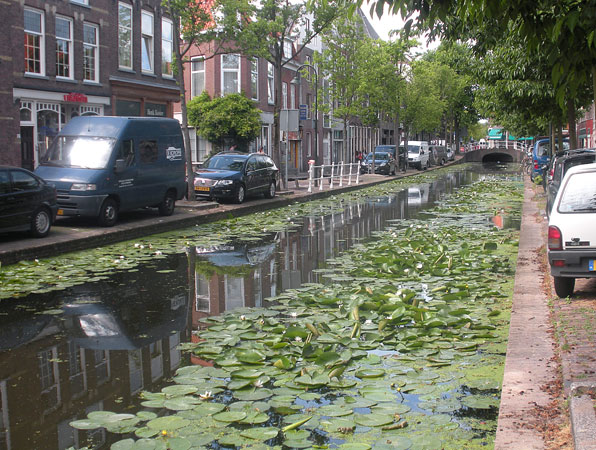
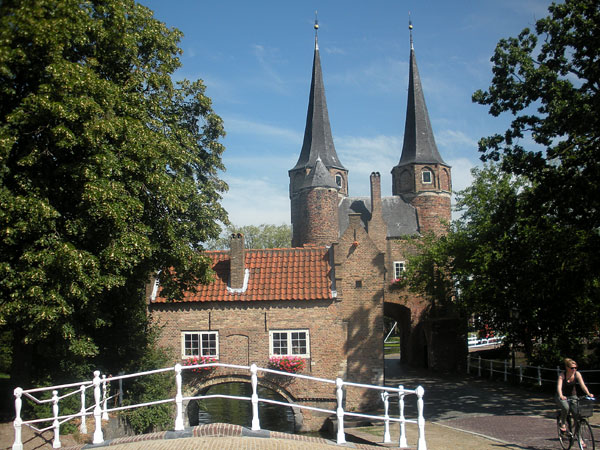
Walking the other direction, not far away was the Markt, the great city square dominated on one end by the Nieuwe Kerk and on the other by the Waag and Stadhuis, surrounded by typical Dutch buildings.
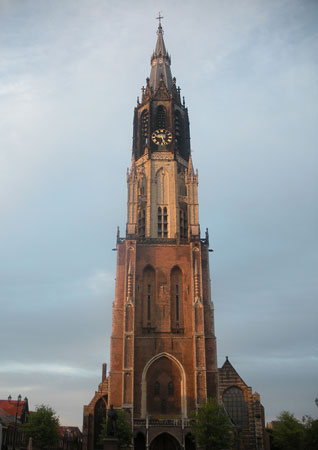
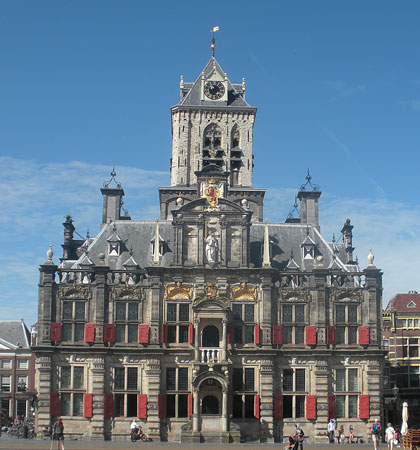
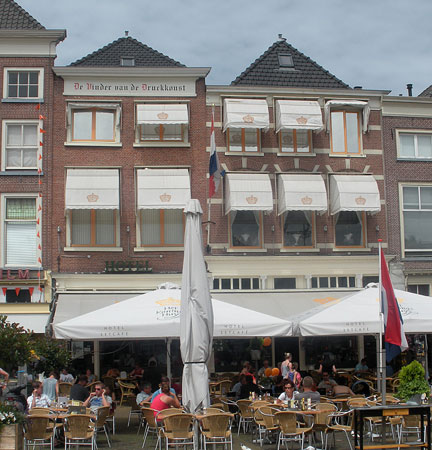
On the evening we arrived in Delft, we had flown from Izmir, Turkey to Schiphol Airport in the Netherlands and traveled by train to Delft Centraal station. We arrived just in time to check into Het Konigshuis, a small hotel on the Markt, and join the excited voetbal (soccer) fans to cheer the Oranje in the World Cup semifinal! Netherlands Won and we joined the cheering, beaming, orange-clad folks in celebration.
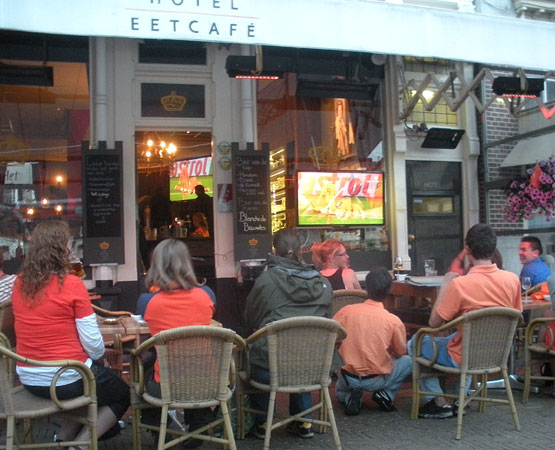
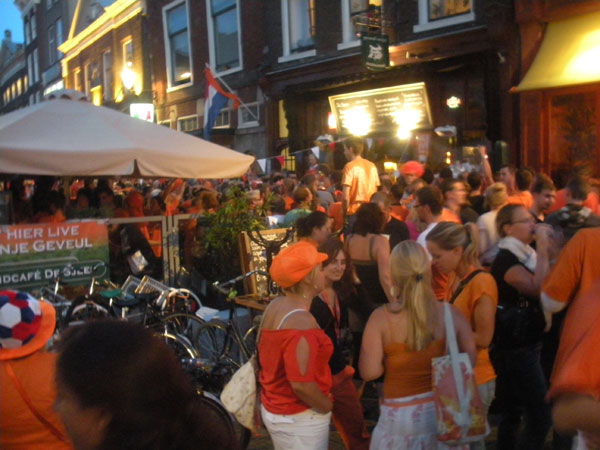
The next day, July 7, Susan's Big Birthday, we arranged to rent our studio, explored our new home city, and celebrated over dinner watching Spain beat Germany. We looked forward to the Final Match the next day.
During the next weeks, we came to know Delft as a city where careful land use planning was apparent. When the population exceeded the capacity of the old city centre, additional buurten (neighborhoods) were planned to the west and then to the east of the city centre. As time moved on, more buurten were planned and built, enabling experiments in various urban forms, always with green space and shade trees.
Two of these, Tanthof East and West, were planned and built in the 1970s and 80s to respond to growth pressures. As we walked through these Buurten, we were reminded of Harlow New Town near London. While we might not choose to live here, these rows of connected houses enabled Delft to meet the needs of new inhabitants with some grace, providing retail centers, a school and library, and easy bus or tram transport to the centre.
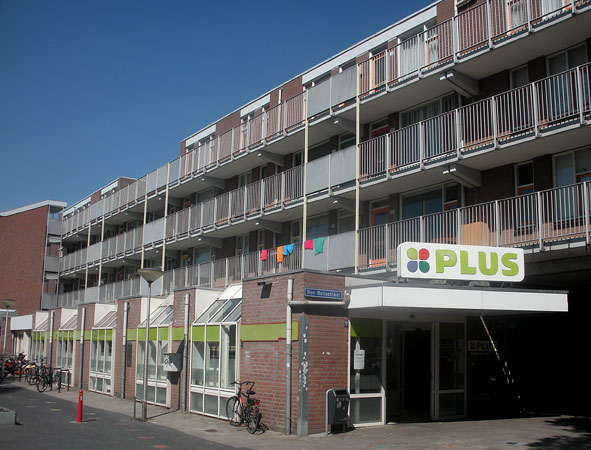
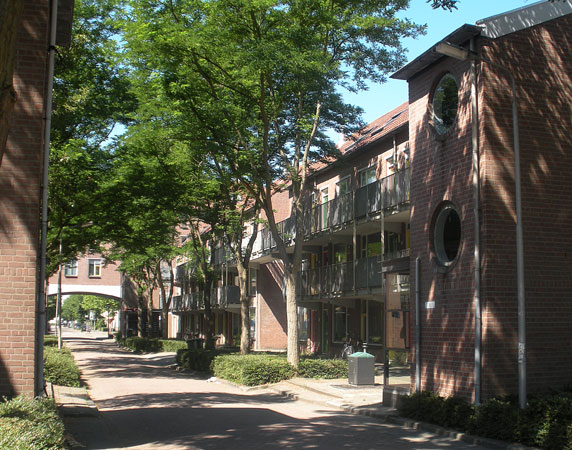
Within the old city, some areas were regenerated as necessary. Sometimes historic structures become too fragile to save! And yet, the important ones, such as the Oude Kerk with its leaning bell tower had been stabilized and lovingly preserved. Here, Anthoni van Leeuwenhoek, the inventor of the microscope, and the artist Johannes Vermeer are buried.
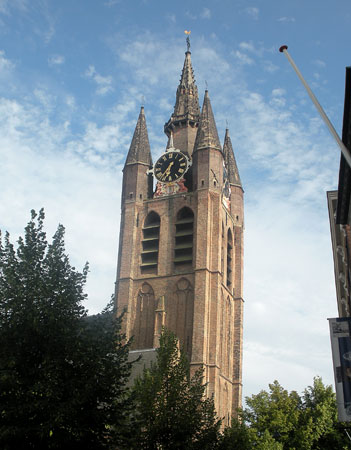
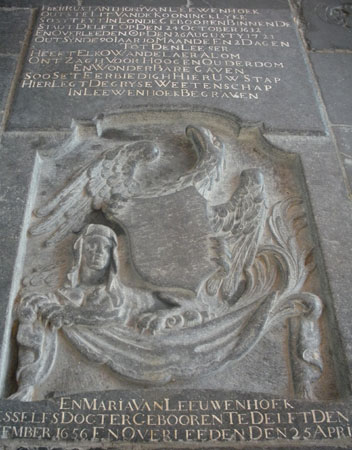
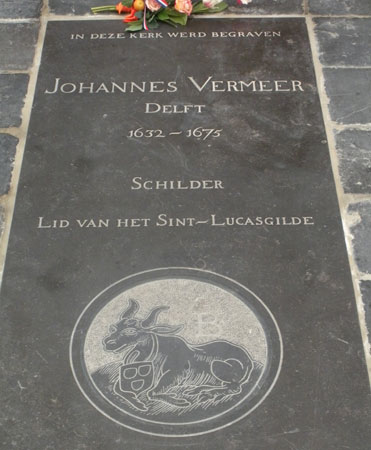
One important regenerated area, Bastiaanplein, offered us a selection of stores, including a large supermarket, C1000, a Kruidvat Drugstore (rather like a Walgreens in the US) a cafe and more. Above all the retail was a very attractive selection of apartment residences.
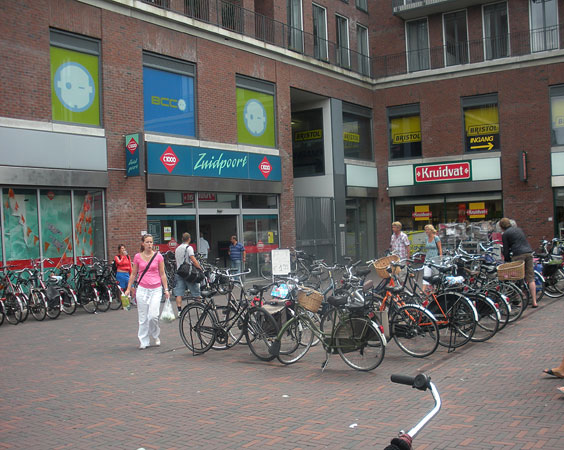
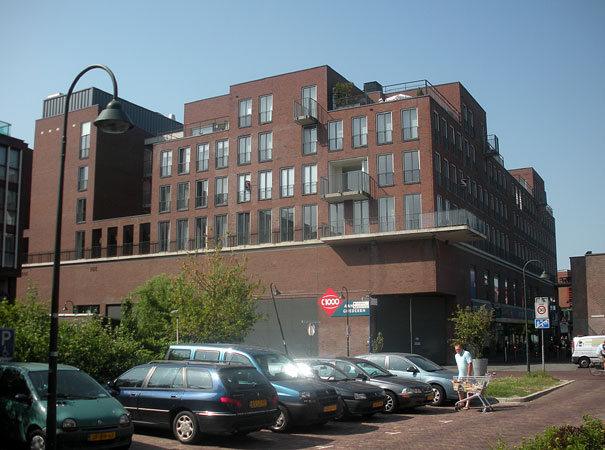
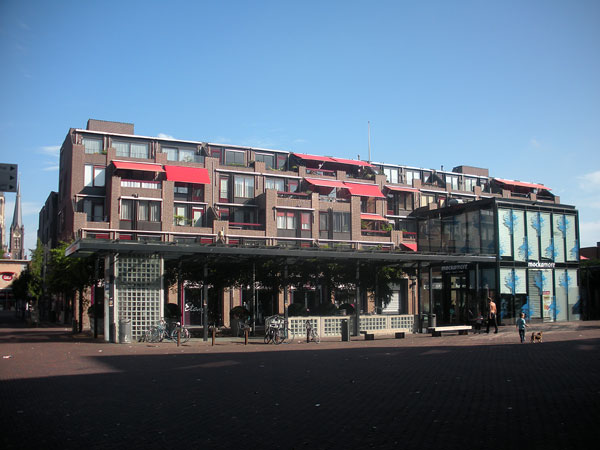
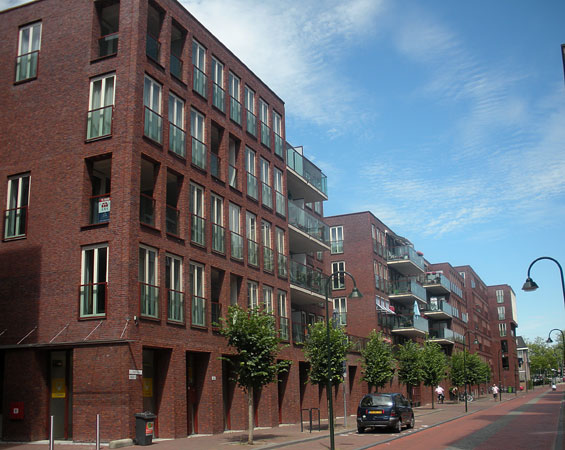
Thursday was market day on the Markt. Each Wednesday evening, crews of strong men constructed roofed stalls over the whole Markt for the next day's activities. Early the next morning the music from an old music organ pulled by a patient horse announced that the market was underway.
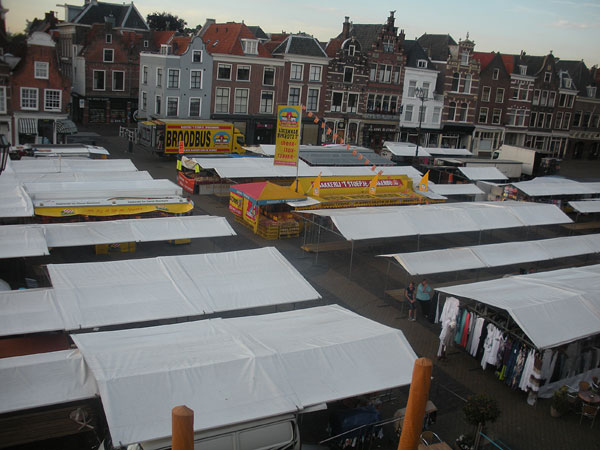
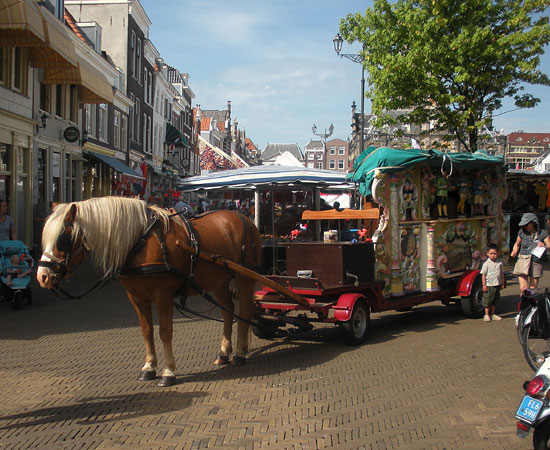
Sellers of fruits and veggies, cheese and eggs, meat and fish, bread and butter, clothing and plumbing supplies, phones and CDs arrived to stock the stalls. Then the shoppers arrived and we realized that consumption in this form could be fun!
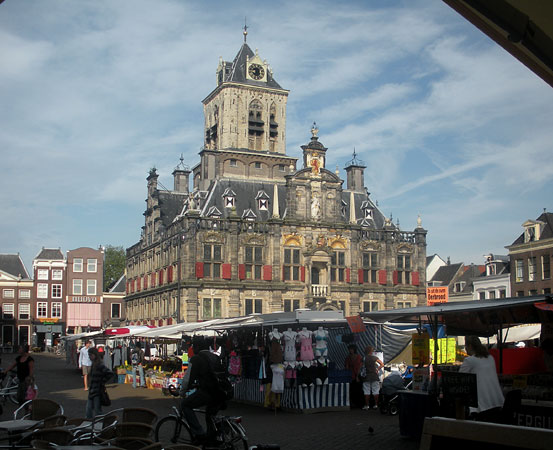
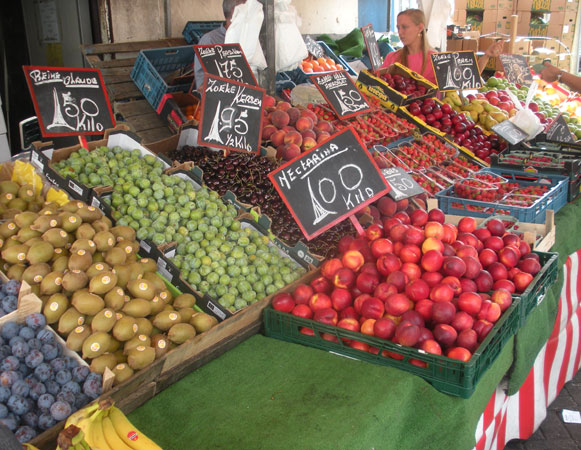
In late afternoon, the vendors packed up and left and by evening, the Markt had returned to normal.
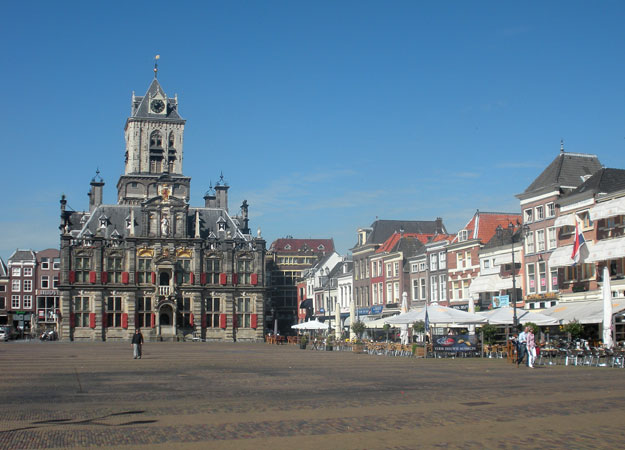
On other days, the shopping opportunities were many and varied indeed. Delft's shopping streets, in a grid just south of the Markt, included shops selling everything one could need or wish for, all within an easily walkable radius. There were plenty of cafes and pubs in case hunger pangs struck as one shopped.
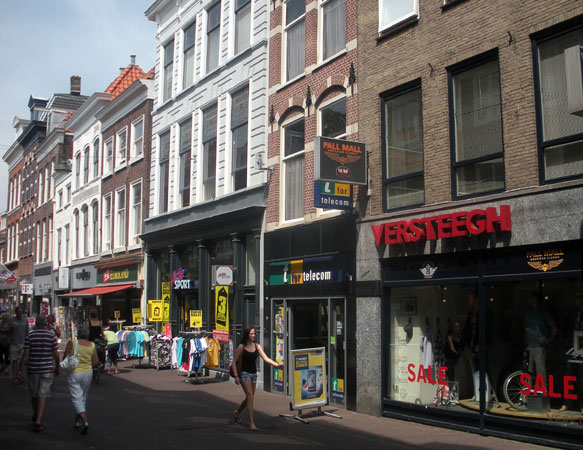
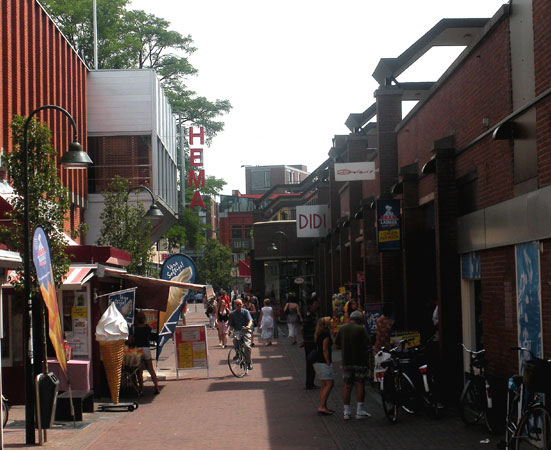
Our mobility was provided by our feet most of the time as the city is criss-crossed by canals and very narrow streets that effectively limit the use of transit. For trips to places near Delft, we rode the bus or tram, and for trips to Rotterdam or Amsterdam, the train offered fast, convenient service. Over time, Delft has become almost a suburb of Den Haag so we were connected by tram to this important city. We also discovered that in this city of canals, mobility was gained in surprising ways.
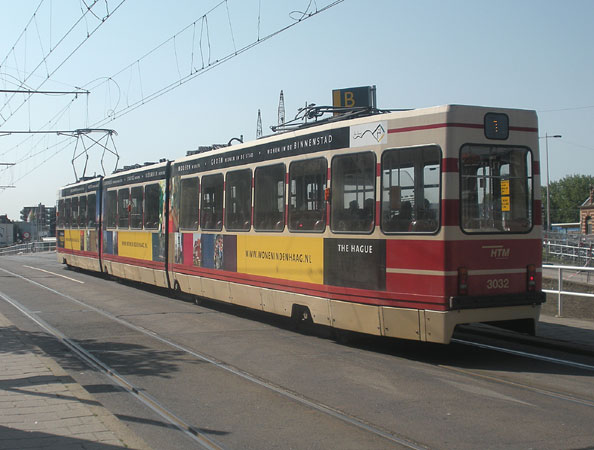
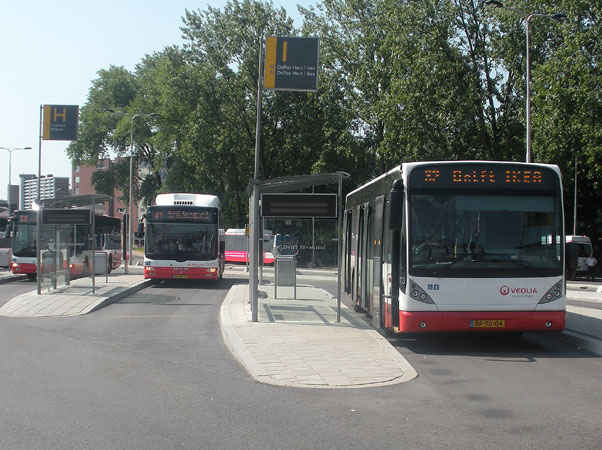
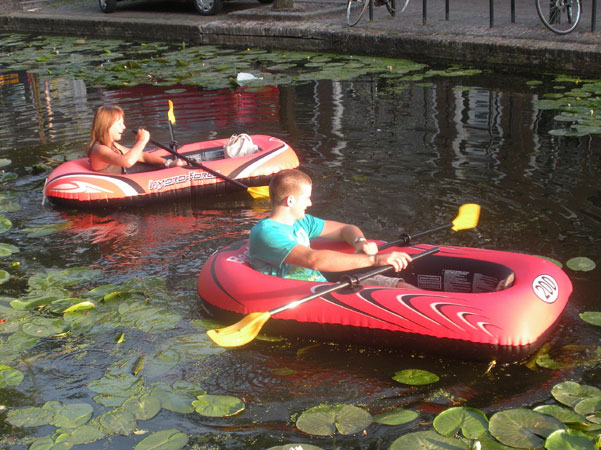
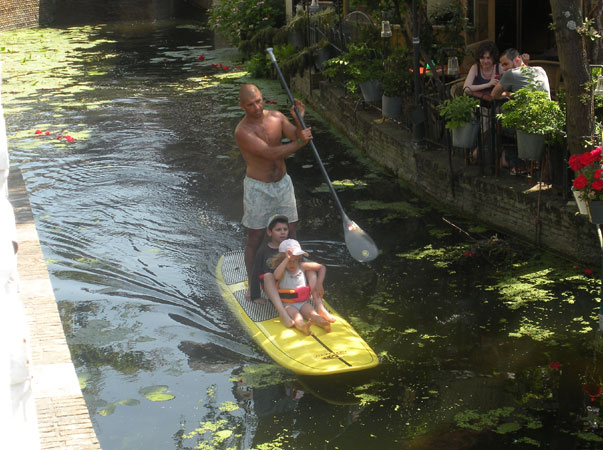
As we explored, we noticed that small red cars with a big green swirl on the side were parked in several spots near our home. We learned that these cars belonged to the Green Wheels car sharing enterprise - an alternative for folks who only needed a car from time to time.
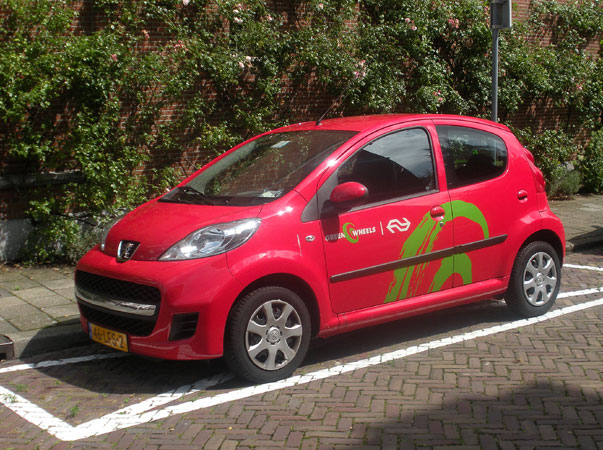
We couldn't help but notice that large scale construction was proceeding around the railway station! One day, we noticed a sign announcing that a bike parking lot adjacent to the station would be closed (below left). Sure enough, hundreds of bikes disappeared three days later (below right). What was happening?
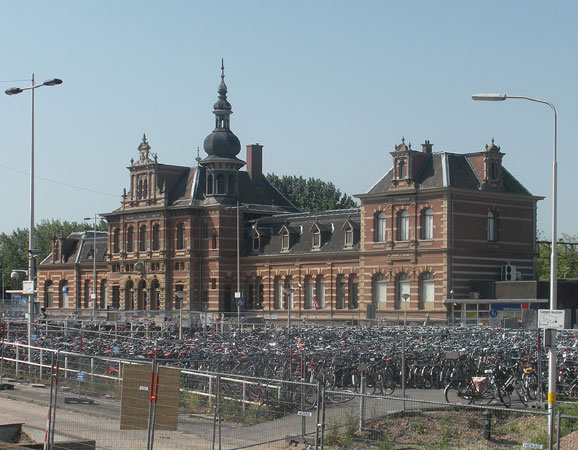
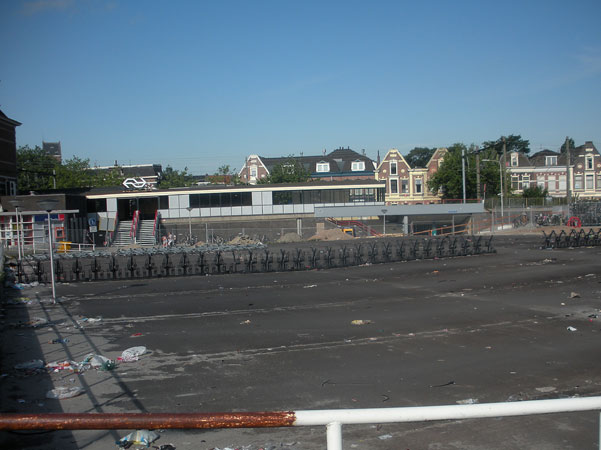
We discovered that a major transformation was already underway that will move the railway tracks underground and redevelop the area around the existing station with a new station and city hall, a bus plaza and a number of mixed use buildings. But don't worry - the existing station will be refurbished and converted into a restaurant and public meeting space. We are investigating this project and plan to have a story soon.
Perhaps the most pleasurable element of life in Delft was the easy connection to the natural world. In the canal just outside our door, we watched families of coots, swans, and ducks foraging in the waters around the lily pads with their lovely white flowers, their young growing with careful parental care in the rich abundance of the watery habitat.
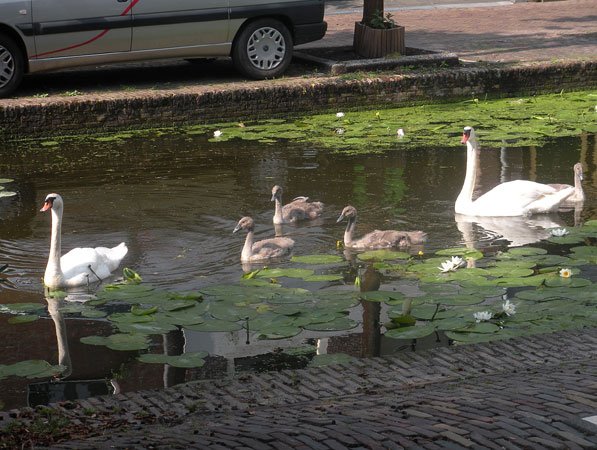
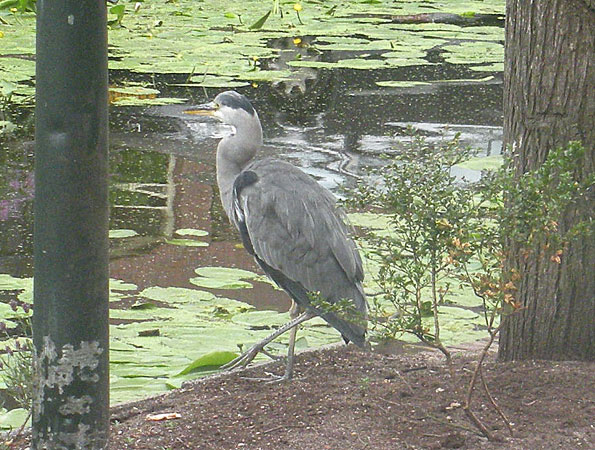
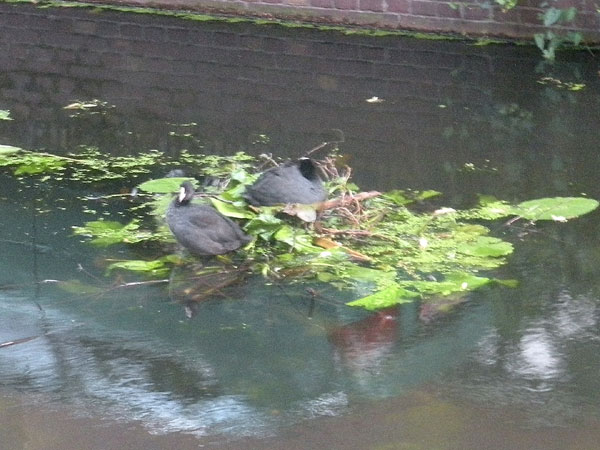
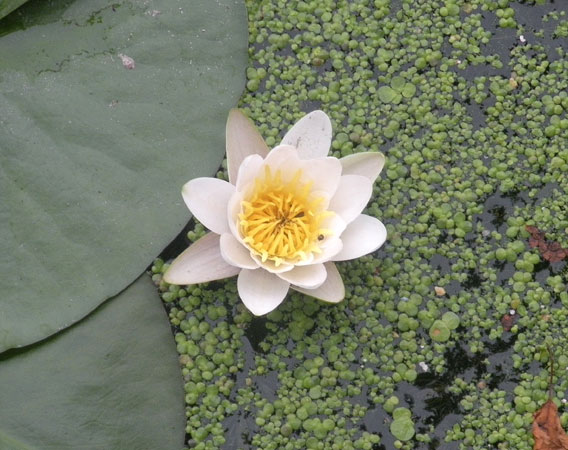
An easy walk away, the Delftse Hout, a large natural area of woods and meadows, offered a break from urban life.
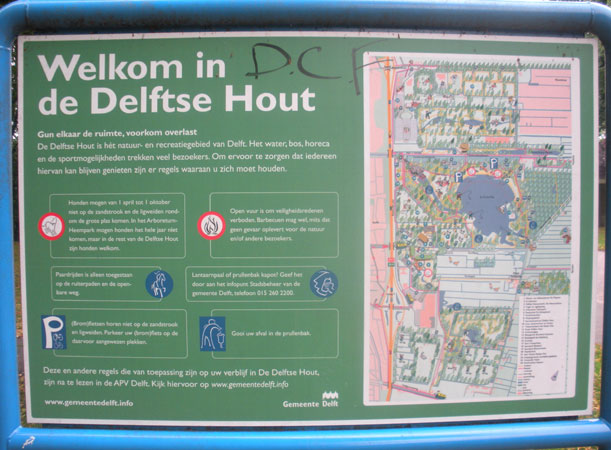
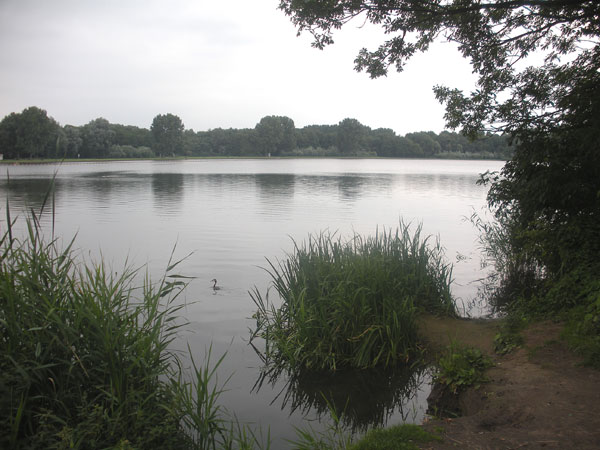
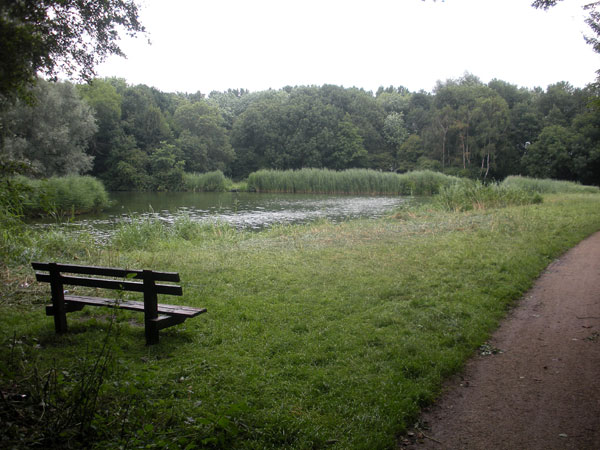
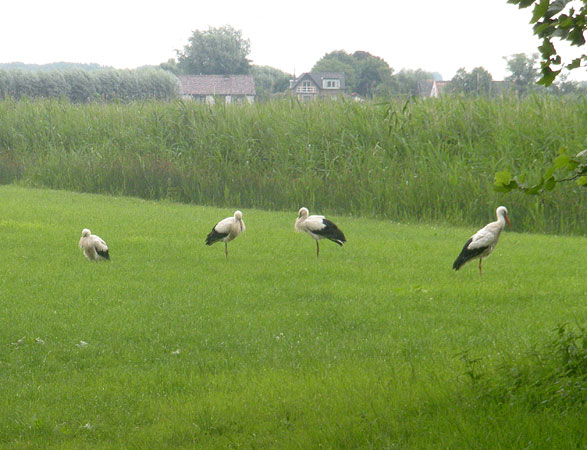
The Botanische Tuin, Botanic Garden, presented a wealth of plants for our inspection and for closer investigation by the botany students of Delft Technical University. We also discovered a few beds of lucious looking vegetables - we wished we had 'picking rights'.
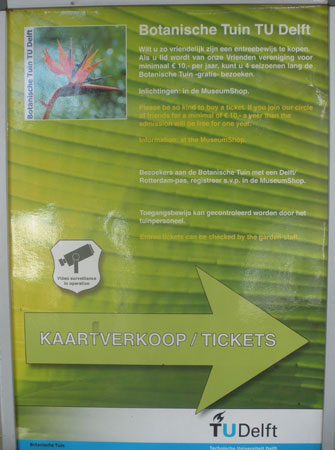
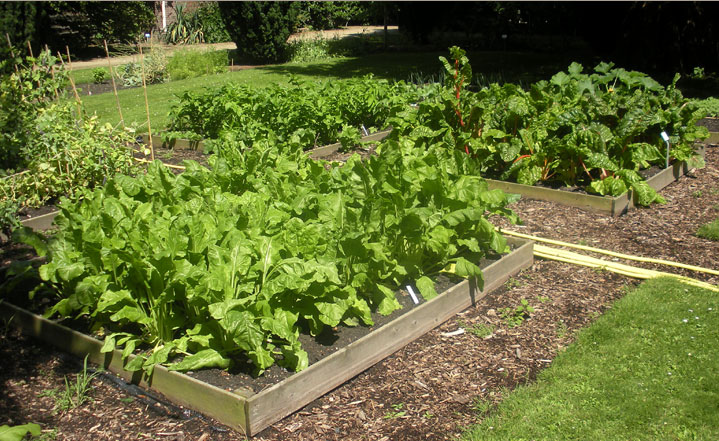
Another pleasurable element of life in Delft was the sense of community created by the numberous concerts and festivals held all over the city.
- We attended organ concerts, sitting in the great space of the Oude Kerk, listening to the reverberations of Bach.
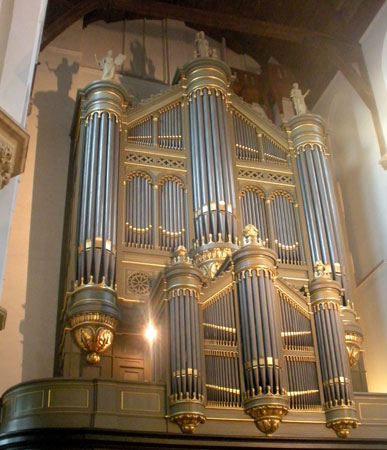
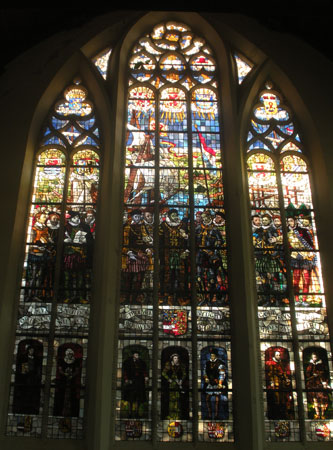
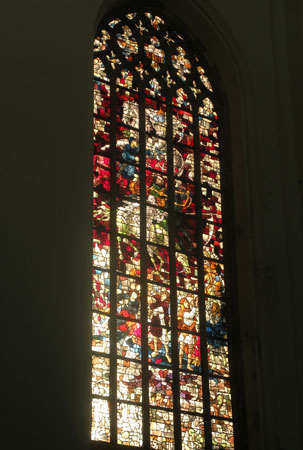
- Then there were concerts on the canal, the musicians seated on a boat and the audience perched along the edges of the canal or seated at the neighboring cafes.
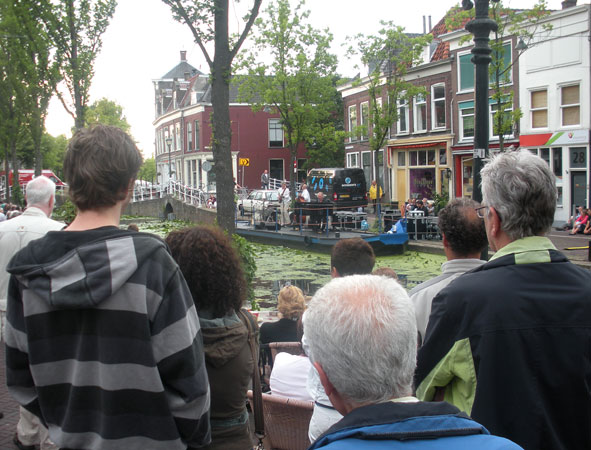
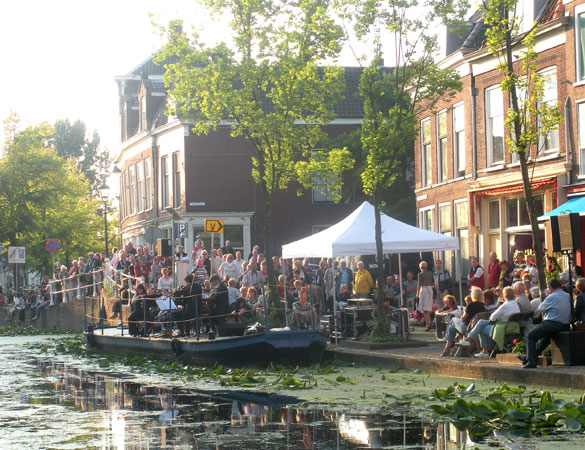
- One Sunday, we joined our neighbors on the banks of the Rijn-Schie kanaal to watch the Varend Corso, a parade of floating floats, decorated with flowers, fruits, veggies and enthusiastic people.
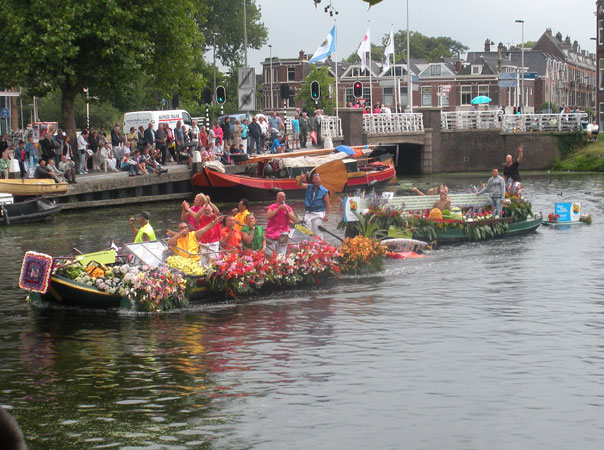
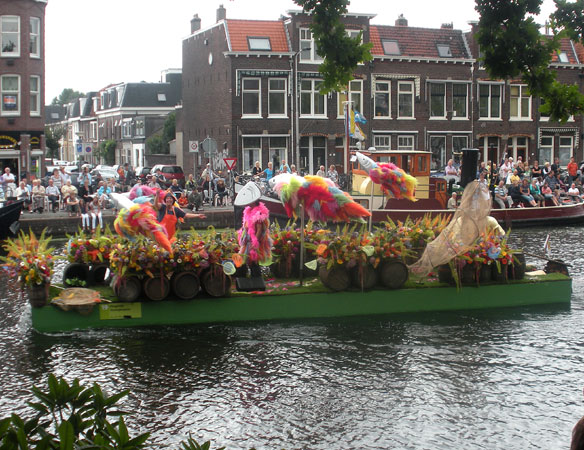
Delft offered us pleasing and efficient physical form, mobility options, and natural world connections - all of the requirements for People Friendliness! But this small city offered us more - serenity, easy living, history lessons, great music, fine food and drink, friendship, mental exercise, and fun!
We share with you a few of the postcard-like views that are everywhere in this place .....
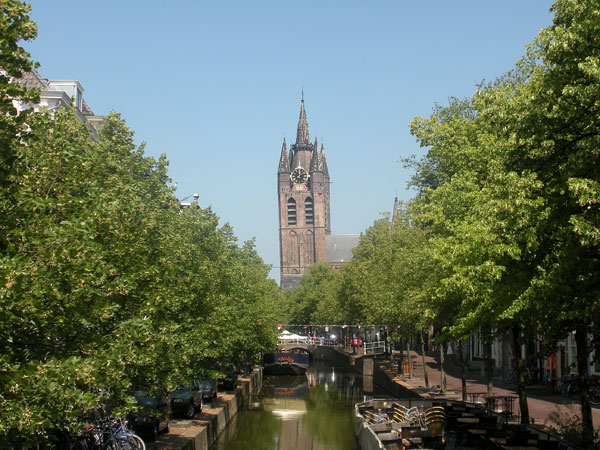
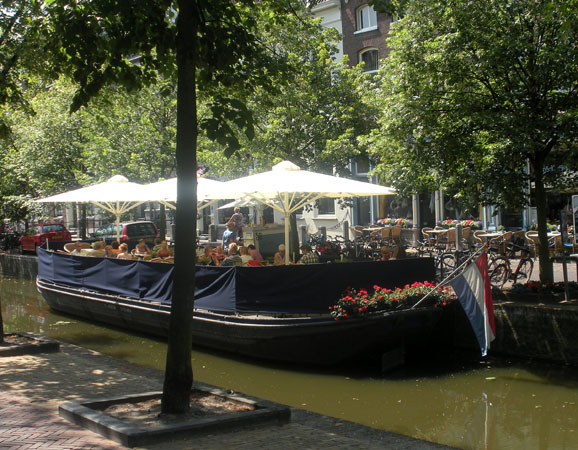
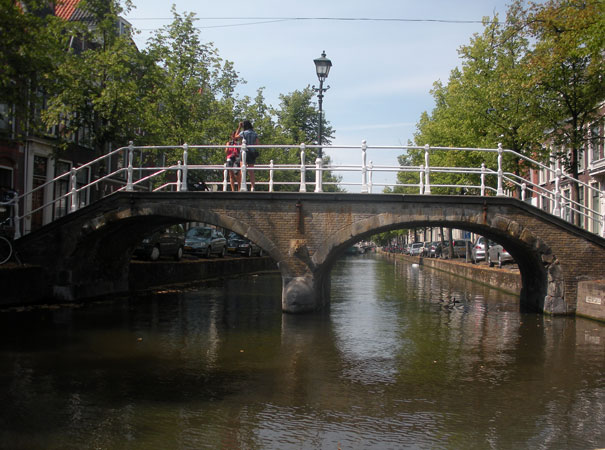
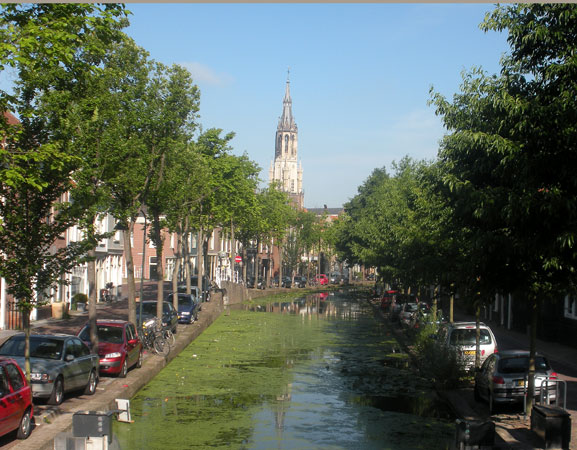
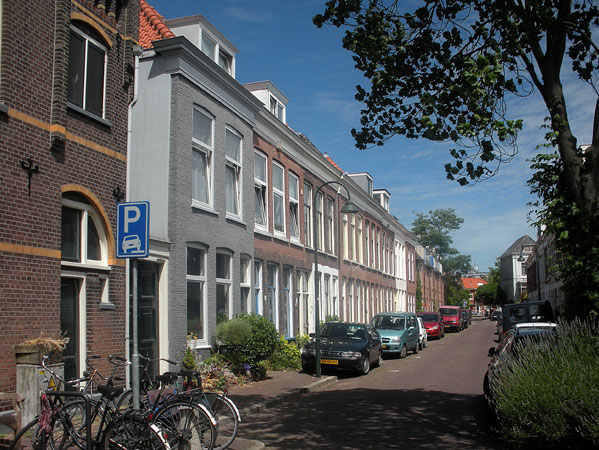
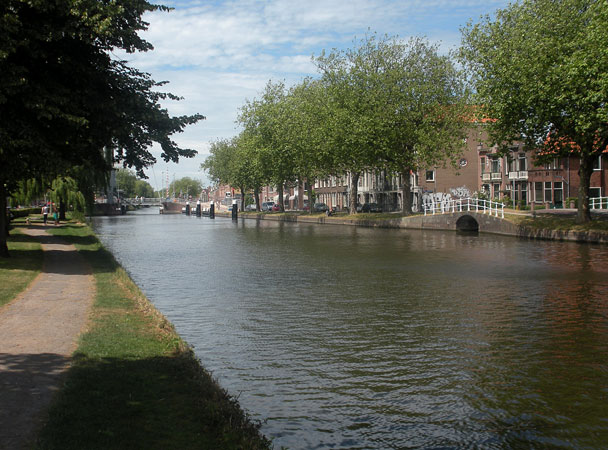
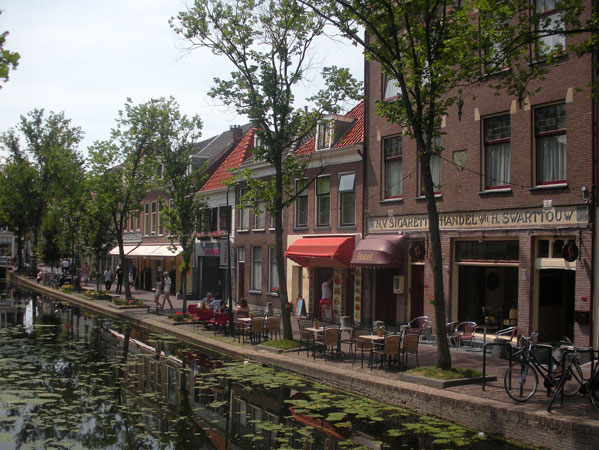
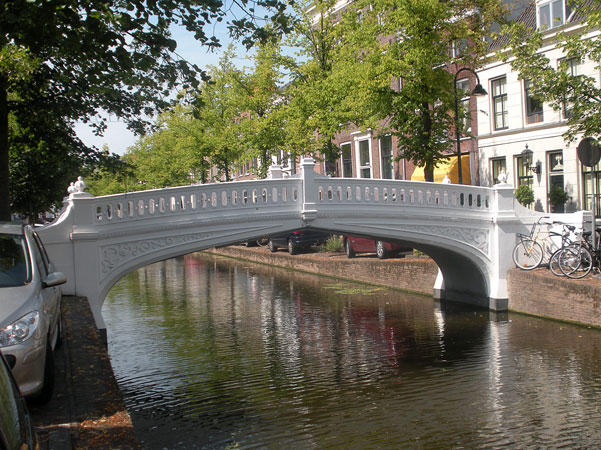
Click here to return to our 'Summer 2010 - Turkey and More Time in Europe' page
![]()